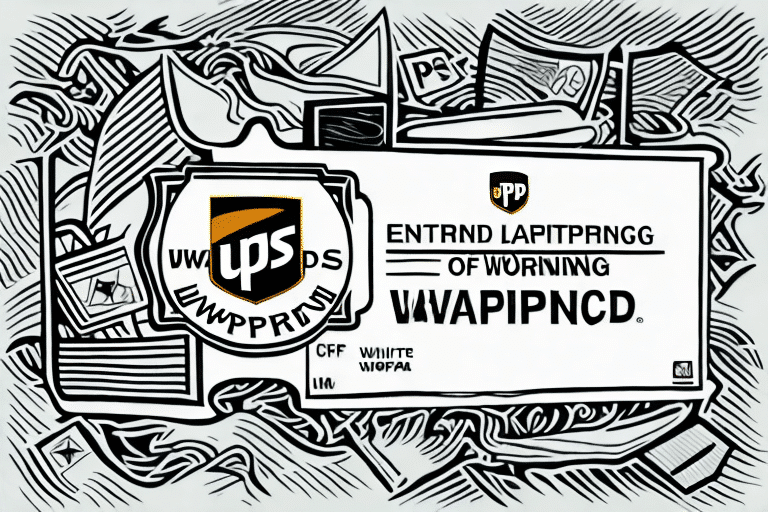Shipping Dangerous Goods with UPS WorldShip
When it comes to shipping dangerous goods, selecting a reliable and compliant shipping carrier is essential. UPS WorldShip offers secure and regulation-compliant transportation of hazardous materials. This comprehensive guide covers everything you need to know about shipping dangerous goods with UPS WorldShip, including regulations, packaging, labeling, and best practices.
Why Choose UPS WorldShip for Shipping Dangerous Goods?
UPS WorldShip is a trusted shipping carrier with extensive expertise in handling dangerous goods. They stay updated with the latest regulations for hazardous material handling, ensuring compliance with global standards. Their commitment to quality service and attention to detail makes UPS WorldShip a reliable choice for transporting your dangerous goods safely.
UPS WorldShip provides specialized packaging and labeling services tailored for dangerous goods, ensuring that shipments are correctly marked and secured. Additionally, their comprehensive tracking and monitoring systems offer peace of mind throughout the shipping process.
Understanding the Regulations for Shipping Dangerous Goods
International Regulations
The transportation of dangerous goods is governed by stringent international regulations to safeguard people and the environment. Key regulatory bodies and standards include:
- International Air Transport Association (IATA): Governs air transport of hazardous materials.
- International Maritime Dangerous Goods (IMDG) Code: Regulates maritime shipping of dangerous goods.
- U.S. Department of Transportation (DOT): Oversees domestic transportation of hazardous materials.
Country-Specific Regulations
Regulations can vary significantly between countries and modes of transportation. For instance, shipping dangerous goods by air may have different requirements compared to sea transport. It is crucial to understand and comply with the specific regulations of both the origin and destination countries to avoid delays, fines, or safety hazards.
For more detailed information, refer to the official guidelines from regulatory bodies such as the IATA Dangerous Goods Regulations and the Pipeline and Hazardous Materials Safety Administration (PHMSA).
Preparing Your Dangerous Goods Shipment with UPS WorldShip
Classification of Dangerous Goods
Properly classifying your dangerous goods is the first step in ensuring safe and compliant shipping. UPS WorldShip's software assists in identifying the correct classification based on the nature of the hazardous material.
Documentation and Compliance
Accurate documentation is critical for compliance. UPS WorldShip helps generate all necessary paperwork, including safety data sheets (SDS) and shipping papers, ensuring that your shipment meets all regulatory requirements.
Packaging Requirements
UPS WorldShip provides guidelines and materials for appropriate packaging. Depending on the type and quantity of dangerous goods, specific packaging standards must be met to prevent leaks, spills, or reactions during transit.
Packing Your Dangerous Goods for Safe Shipping
Selecting the Right Packaging Materials
Choosing the appropriate packaging materials is vital for the safe transportation of dangerous goods. UPS WorldShip offers a range of UN-approved packaging options designed to withstand the rigors of transit.
Proper Labeling and Marking
Each package containing dangerous goods must display the correct hazard labels, UN numbers, and shipping names. UPS WorldShip ensures that all labels and markings comply with international and domestic regulations, reducing the risk of delays or fines.
Securing the Package
Proper sealing and securing of packages prevent accidental releases of hazardous materials. UPS WorldShip provides guidelines on how to securely fasten packages to maintain integrity throughout the shipping process.
Choosing the Right Shipping Method for Your Dangerous Goods
Air Shipping
Air transport is ideal for time-sensitive shipments but comes with strict regulatory requirements. UPS WorldShip ensures that all air shipments of dangerous goods comply with IATA regulations.
Ground Shipping
Ground shipping offers flexibility and is suitable for shorter distances. UPS WorldShip handles ground shipments by adhering to DOT regulations, ensuring safe and efficient delivery.
Sea Shipping
For large or heavy shipments, sea transport is often the most cost-effective method. UPS WorldShip manages sea shipments by following IMDG codes, ensuring that dangerous goods are transported safely over long distances.
Handling and Storing Dangerous Goods Safely
Proper Storage Practices
Safe storage of dangerous goods is essential to prevent accidents and ensure compliance. UPS WorldShip advises on maintaining appropriate storage conditions, such as temperature control and segregation of incompatible materials.
Safe Handling Procedures
Implementing proper handling procedures minimizes the risk of spills, leaks, or exposure. UPS WorldShip provides training resources to educate staff on safe handling practices and emergency response protocols.
Emergency Preparedness
Being prepared for potential incidents is crucial. UPS WorldShip offers guidance on developing emergency response plans, including procedures for reporting incidents and coordinating with emergency services.
Ensuring Compliance with International and Domestic Regulations
Maintaining compliance with both international and domestic regulations is a complex task. UPS WorldShip's team of experts continuously monitors regulatory changes and provides updates to ensure your shipments remain compliant.
UPS WorldShip also offers training modules and reference guides to help customers stay informed about the latest regulations and best practices in shipping dangerous goods.
Common Mistakes to Avoid When Shipping Dangerous Goods with UPS WorldShip
- Improper Packaging: Using non-approved packaging can lead to accidents and regulatory fines.
- Insufficient Labeling: Missing or incorrect labels can cause delays and safety hazards.
- Incomplete Documentation: Missing paperwork can result in fines and shipment rejections.
- Ignoring Regulatory Updates: Failing to stay informed about changes in regulations can lead to non-compliance.
By partnering with UPS WorldShip and adhering to their guidelines, you can avoid these common pitfalls and ensure the safe and compliant transportation of your dangerous goods.
What to Do in Case of a Dangerous Goods Incident During Shipping
Despite careful planning, incidents can occur during the transportation of dangerous goods. In such cases, following established emergency protocols is crucial:
- Immediate Reporting: Notify UPS WorldShip and relevant authorities immediately.
- Provide Detailed Information: Share all necessary details about the incident, including the type and quantity of the hazardous material involved.
- Coordinate with Emergency Responders: Work closely with emergency services to mitigate the impact of the incident.
Failure to adhere to these protocols can result in severe consequences, including legal action and environmental harm. UPS WorldShip provides training and resources to ensure that all personnel are prepared to handle such emergencies effectively.
Conclusion
Shipping dangerous goods requires meticulous planning, compliance with regulations, and the right partnerships. UPS WorldShip offers the expertise, resources, and support needed to transport hazardous materials safely and efficiently. By following best practices and leveraging UPS WorldShip's comprehensive services, you can ensure that your dangerous goods reach their destination securely and in compliance with all applicable regulations.
For more information on shipping dangerous goods, refer to authoritative sources such as the IATA Dangerous Goods Regulations and the Pipeline and Hazardous Materials Safety Administration (PHMSA).






















